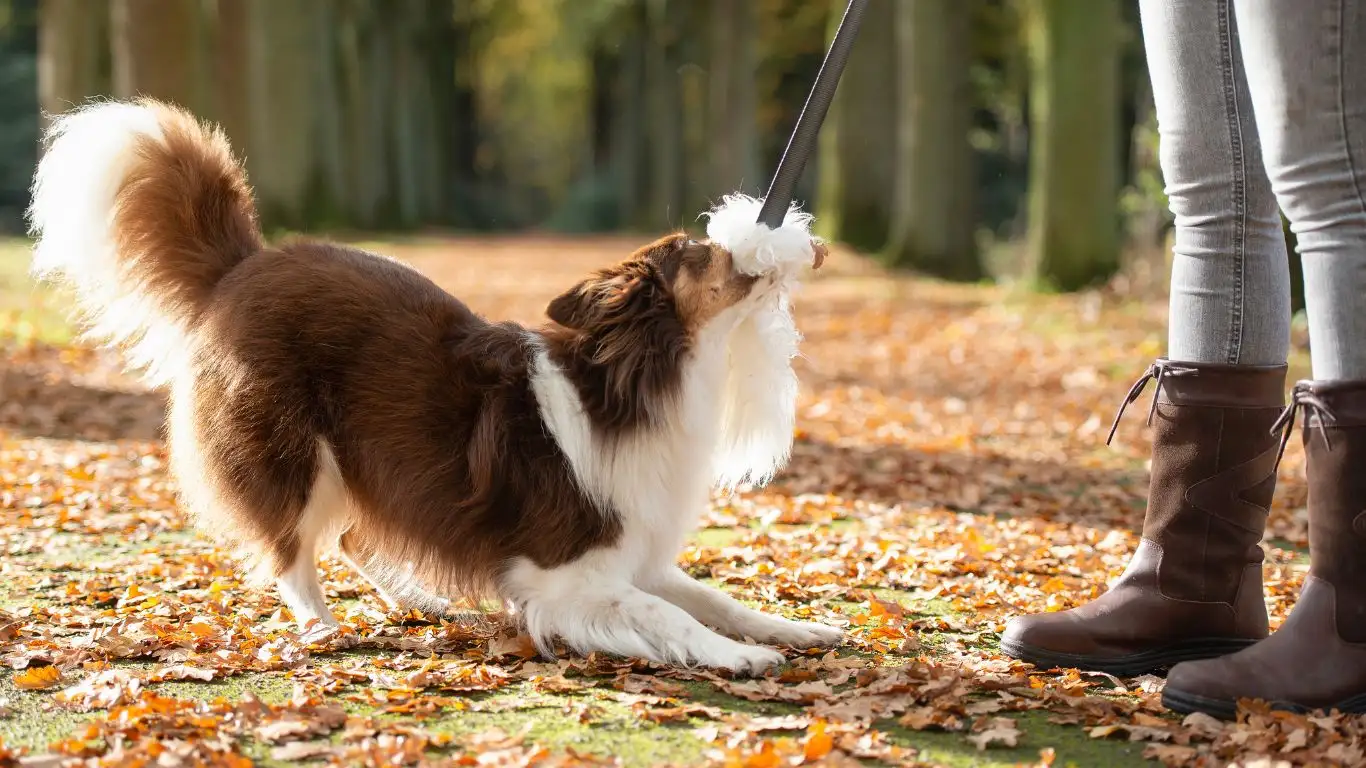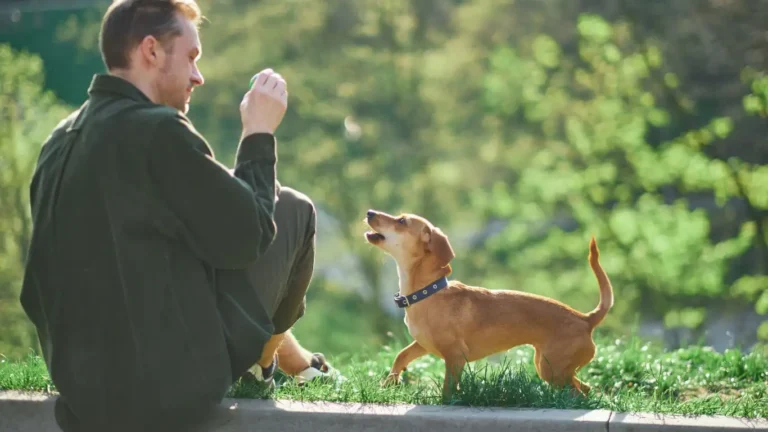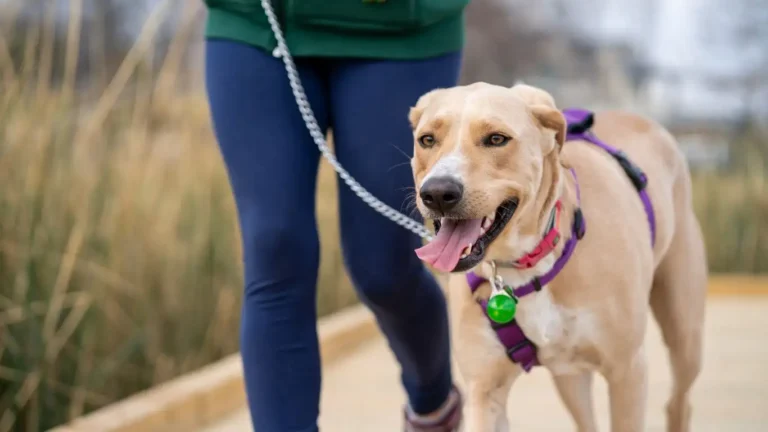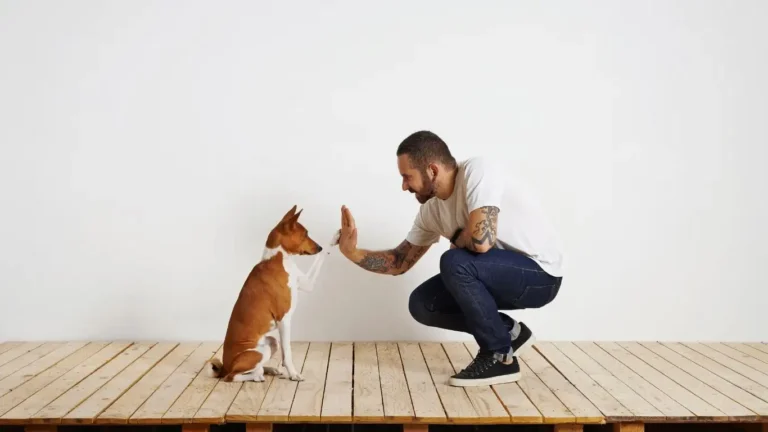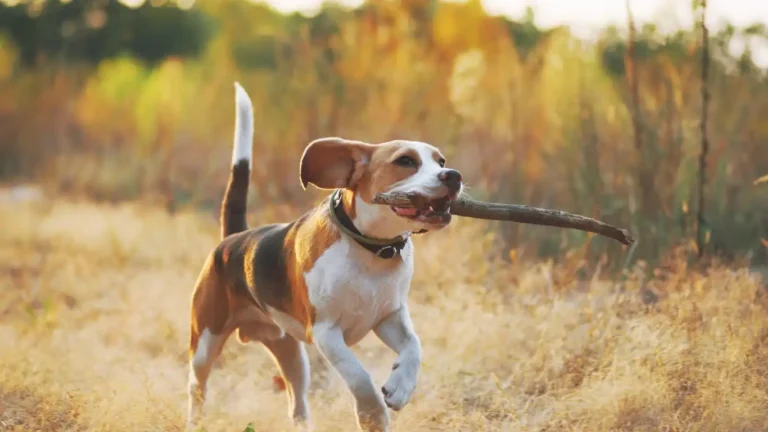How to Train a Dog to Stop Lunging at People on Walks Effectively
When you’re out for a walk with your dog, it’s supposed to be a peaceful and enjoyable experience. But what happens when your dog starts lunging at people? Whether they’re pulling at the leash in excitement, fear, or aggression, lunging can quickly turn your walks into a stressful event. As a Certified Professional Dog Trainer (CPDT-KA), I’ve worked with countless dog owners on this very issue. In this article, I’m going to share some insights on how to train a dog to stop lunging at people on walks, drawing from my own experience and tried-and-tested techniques that really work. It’s not just about correcting the behavior—it’s about understanding the root cause and setting both you and your dog up for success. Let’s dive in!
Understanding Why Dogs Lunge at People
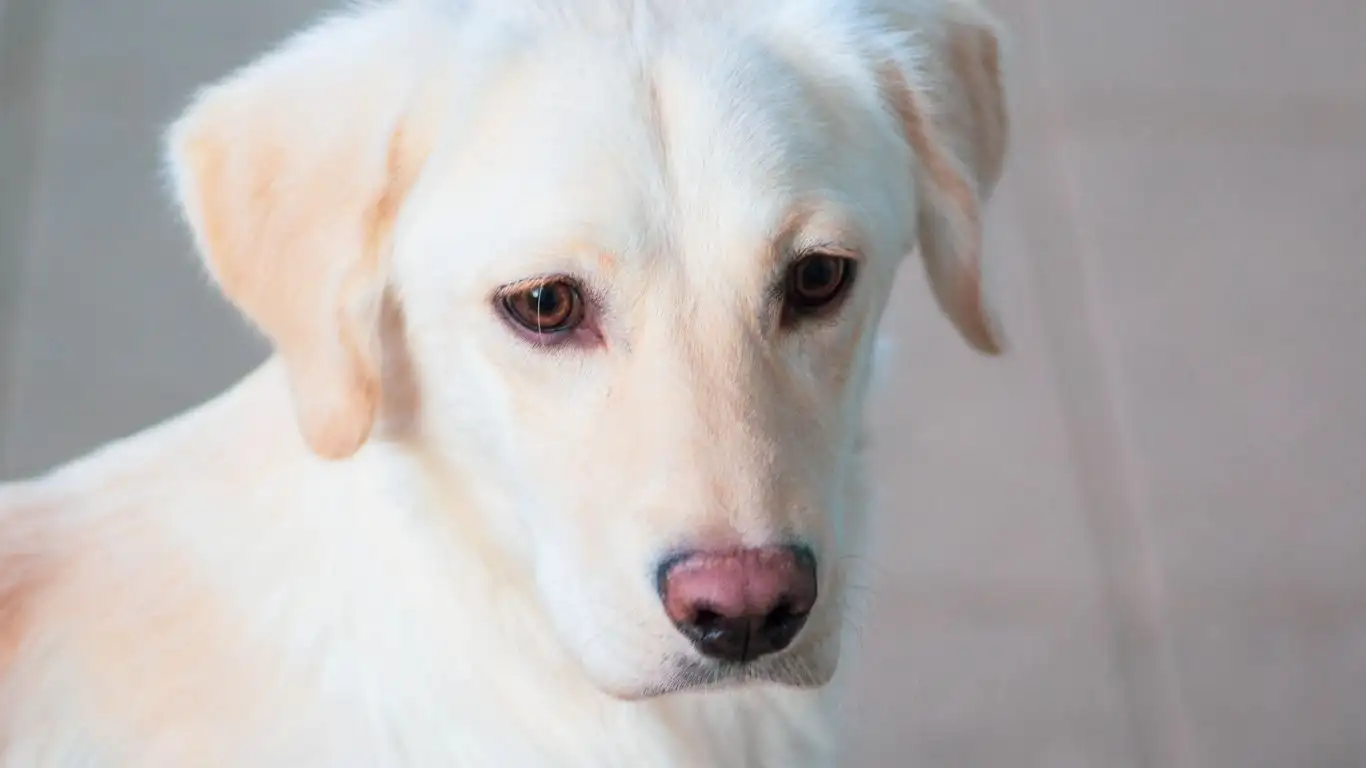
Before we get into the how-to’s, it’s important to understand the *why* behind lunging. Why does your dog lunge at people in the first place? There are a few different reasons, and figuring out which one applies to your dog is the first step in resolving the issue.
Excitement or Overstimulation
One of the most common reasons dogs lunge at people is excitement or overstimulation. This can happen when they see a new person or another dog while on a walk, and their excitement just gets the better of them. They may be jumping around, barking, or pulling on the leash as a way to get closer to the person they’ve spotted. Think of it like a child who gets excited when meeting someone new—they may not mean any harm, but their behavior can get a little too wild!
Fear or Anxiety
Sometimes, dogs lunge at people out of fear or anxiety. If your dog has had negative experiences with strangers in the past—whether it’s been yelled at, had an uncomfortable encounter, or just never learned proper socialization—they may be reacting to the unfamiliar person by lunging. This could be a defensive response, where they’re trying to protect themselves or their space. If your dog tends to be more fearful or anxious around new people, this is a behavior you might want to address sooner rather than later.
Leash Reactivity
Leash reactivity is another common cause of lunging. In this case, your dog may not have a problem with people per se but with being on a leash. Some dogs feel frustrated or restricted when they’re on the leash, and they may use lunging as a way to try and get closer to the person or dog they’re seeing. It’s important to remember that this kind of behavior isn’t necessarily aggression—it’s more about the dog’s lack of coping skills when it comes to the leash.
Territorial Behavior
Dogs can also lunge out of territorial behavior. This happens when they see a person approaching their space (like their yard or a familiar walking route) and feel the need to protect it. Dogs that are territorial tend to become more protective of what they perceive as “theirs” and may display behaviors like lunging, barking, or growling. Understanding the territorial nature of your dog can help you better manage these situations.
Building a Foundation for Training
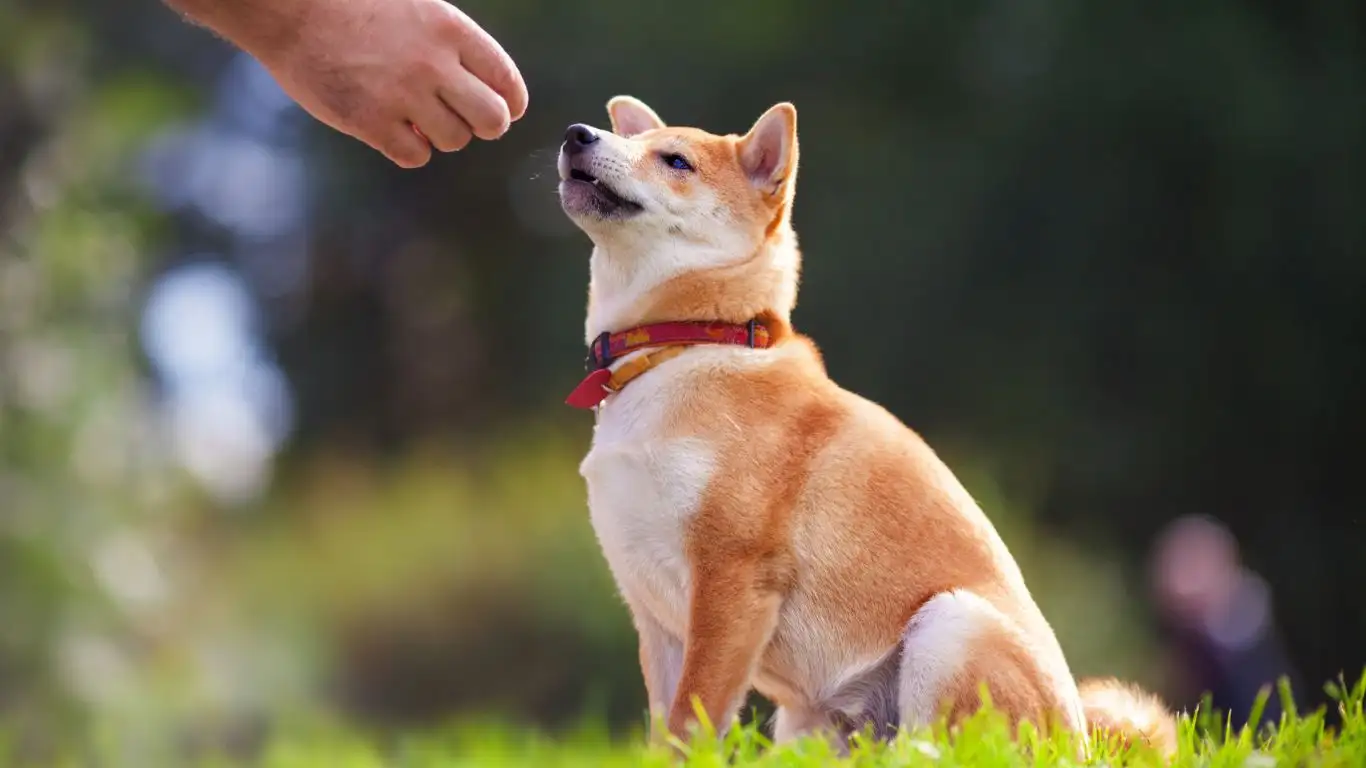
Once you understand the cause of your dog’s lunging, you can start building a solid foundation for training. Training a dog to stop lunging isn’t about quick fixes or punishment—it’s about building positive habits, reinforcing desired behaviors, and creating a calm walking routine. It’s crucial to remember that consistency is key. Just like we need practice and repetition, so does your dog!
Start with Basic Obedience
Before you address the lunging itself, make sure your dog has a solid grasp of basic obedience. Commands like “sit,” “stay,” “heel,” and “leave it” can be extremely helpful in redirecting your dog’s attention when they start to lunge. When your dog knows basic commands, it’s easier to guide them through situations that trigger their lunging behavior.
If your dog isn’t already proficient in these commands, take the time to work on them in a distraction-free environment. Once they’ve mastered these skills, you can start practicing them on walks, where the distractions are greater. Consistently rewarding your dog for following commands is important—make sure you use positive reinforcement, like treats or praise, to encourage good behavior.
Use a Loose Leash
Another foundational training tip is teaching your dog to walk on a loose leash. When a dog is constantly pulling on the leash, it can increase the chances of lunging. A loose leash gives your dog more control over their movements and allows them to remain calm when encountering people or other distractions. Start with small training sessions, and reward your dog whenever they walk without pulling. This behavior will start to transfer to walks where lunging is an issue, as your dog will learn to focus on you instead of the person approaching.
Desensitize Your Dog to Distractions
If your dog is reactive to people, other dogs, or certain environments, it’s important to slowly desensitize them to those triggers. Start by exposing your dog to lower-level distractions at a distance and gradually increase the intensity as they get better. For example, if your dog lunges at people, start by walking in quieter areas and gradually work your way to busier environments. The goal is to help your dog become more comfortable with the presence of people while remaining calm.
Working on the Specific Behavior
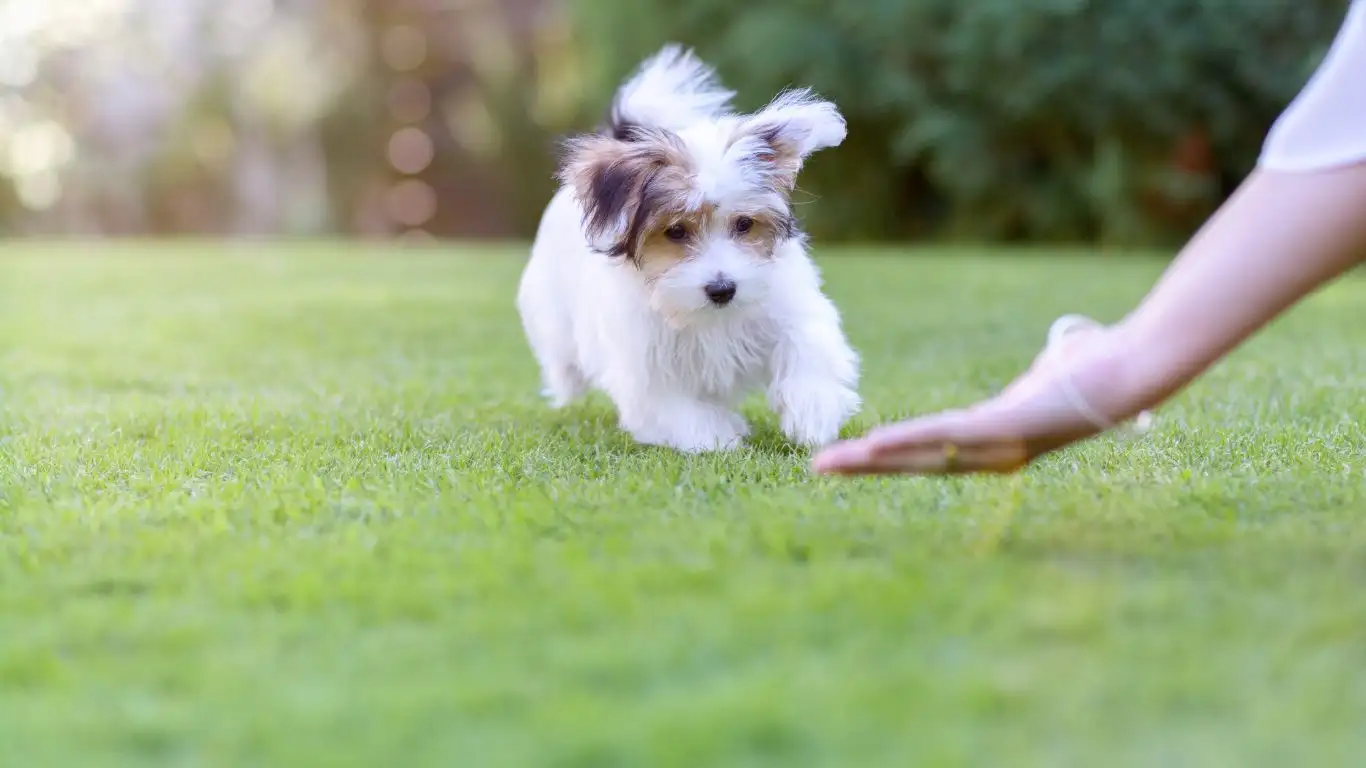
Now that we’ve covered some foundational skills, it’s time to focus specifically on the lunging behavior. This is where the magic happens! You’ll need to practice specific techniques that can help your dog overcome this habit.
Redirect Attention with Positive Reinforcement
One effective technique to stop lunging at people is to use positive reinforcement to redirect your dog’s attention when they start to show signs of lunging. When you see your dog’s body language change (e.g., pulling, staring, or getting tense), use a command like “look” or “watch me” to get their attention back on you. Immediately reward your dog with praise or a treat when they focus on you instead of the person. This helps them associate calm behavior with positive rewards.
Use the “Stop and Go” Method
Another technique I’ve found effective in my training sessions is the “stop and go” method. When your dog starts lunging, stop walking immediately and stand still. Wait for your dog to settle down, and then reward them with a treat when they are calm. Once they’re calm, you can continue walking. This teaches your dog that lunging will stop the walk, but calm behavior will allow them to continue. It may take a few tries, but with consistency, your dog will begin to understand that lunging won’t get them where they want to go.
Dealing with Leash Reactivity: More Than Just Lunging
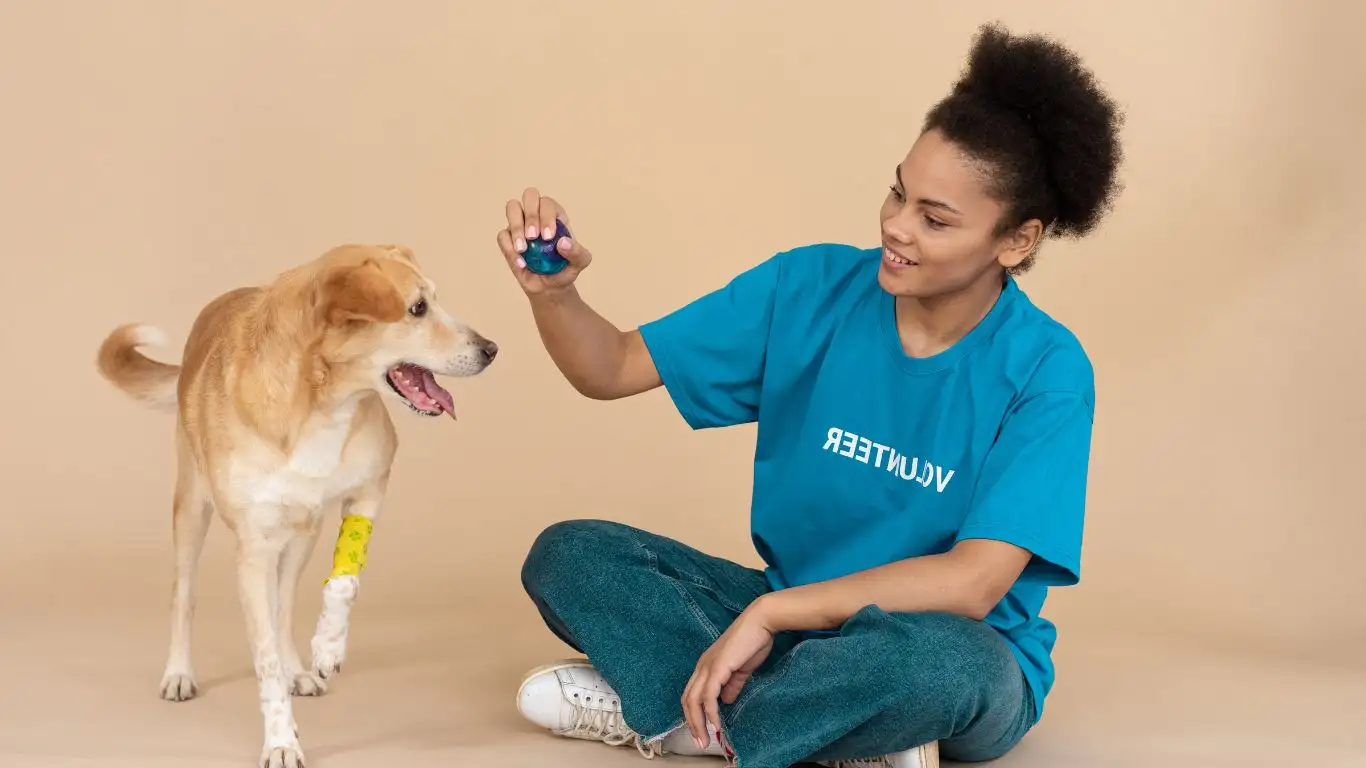
Leash reactivity isn’t just about lunging at people—it can extend to other dogs, bikes, or anything that moves. And when you have a reactive dog, even the smallest distraction can set them off. If your dog is reactive, it’s important to remember that lunging is only a symptom of a larger issue: frustration, fear, or overstimulation. In my experience, leash reactivity often develops when a dog doesn’t know how to cope with the restricted freedom of being on a leash, especially when they’re not used to encountering new stimuli in a controlled way. But no worries—we can work through this!
Understanding the Leash Reactivity Cycle
Leash reactivity often follows a cycle. It starts with a trigger—whether that’s a person, another dog, a bike, or something else your dog deems worthy of attention. Once the trigger is spotted, your dog’s excitement or anxiety rises, and before you know it, they’re lunging, barking, or pulling. The problem is that when this cycle repeats itself, the dog starts to learn that lunging is the way to deal with these triggers. This is why stopping the behavior early is crucial, as it helps break the cycle before it becomes ingrained.
How to Interrupt the Reactivity Cycle
One of the best ways to break the cycle of leash reactivity is by interrupting the behavior before it escalates. As soon as you notice your dog starting to show signs of becoming reactive—maybe their body stiffens or their ears perk up—take action to redirect their focus. You can use a variety of tools to interrupt this cycle, including:
- Vocal cues—A firm “leave it” or “watch me” command can break your dog’s focus on the trigger.
- Physical redirection—Gently guiding your dog away from the stimulus can help reset their mindset.
- Turning around—If your dog starts lunging, sometimes simply turning around and walking in the opposite direction can break the tension.
Incorporating these techniques can help prevent your dog from fully engaging in lunging behavior and teach them to look to you for guidance when they encounter triggers.
Practice “Calm” Behavior with Positive Reinforcement
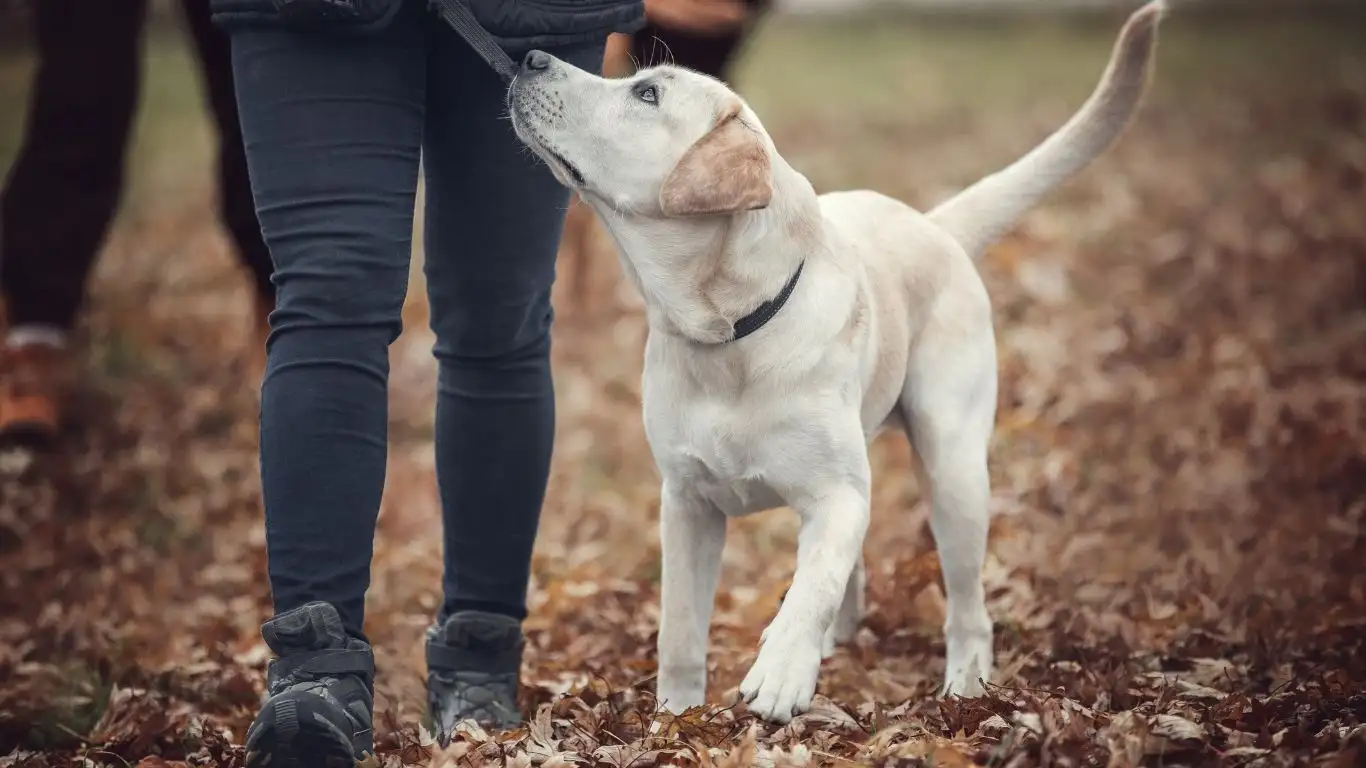
One thing I’ve always emphasized in my training is the importance of reinforcing calm behavior. If your dog knows that being calm leads to rewards, they’re more likely to repeat that behavior in the future. And it’s not just about rewarding good behavior when your dog isn’t lunging—it’s about teaching them how to be calm, even when they’re in the presence of a trigger. This takes time and patience, but it’s worth it!
Set Up Calm Training Sessions
To teach your dog how to stay calm on walks, set up specific training sessions where you gradually expose them to distractions at a manageable distance. For example, you could start by practicing with a friend or family member standing a little distance away, and reward your dog for staying calm and not lunging. Slowly decrease the distance over time, all while reinforcing calm behavior with treats or praise. This allows your dog to learn that they can stay calm in the presence of distractions and still receive rewards.
As you practice, remember to vary the environments and scenarios to help your dog generalize the calm behavior. If you only practice calmness in one location, your dog may struggle to apply the same behavior in different areas, like on a busy street or at the park.
Reward Calmness, Not Just Silence
It’s essential to reward your dog not just for being quiet but for demonstrating calmness in the face of a potential trigger. This might mean they look at the person or dog without reacting, or simply walk past the distraction without lunging. These subtle moments of calmness should be celebrated and rewarded. Over time, your dog will begin to understand that remaining calm is the key to receiving attention and treats.
Proper Equipment Can Make a Big Difference
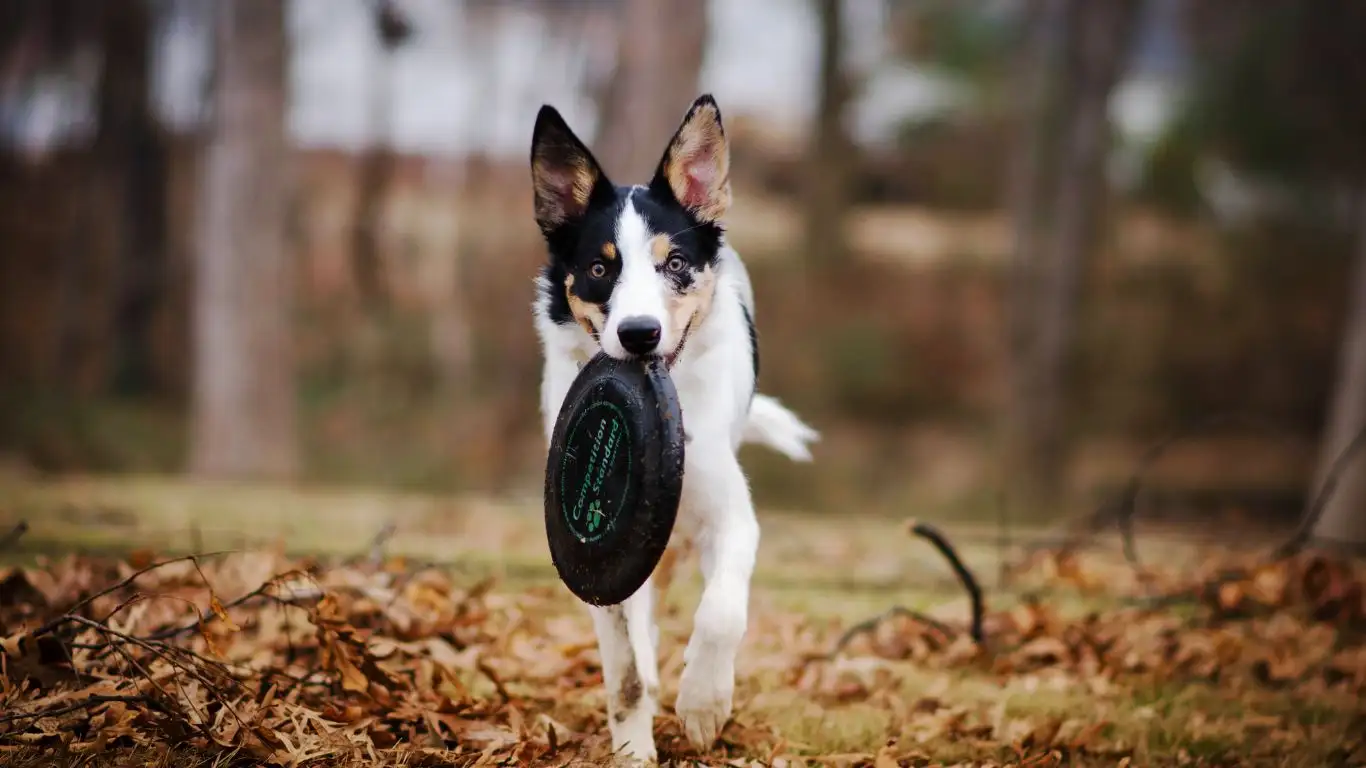
When you’re working on leash training, the right equipment can make all the difference. I always tell my clients that a well-fitting harness, head collar, or leash can help make your training sessions more effective and less frustrating for both you and your dog. Certain tools can provide more control over your dog, which is especially helpful when dealing with lunging or pulling behavior. While you can train a dog without these tools, having the right gear can make your training efforts go much smoother.
Harnesses vs. Collars
When it comes to lunging, I recommend using a no-pull harness or front-clip harness, as they give you more control over your dog’s movements without putting pressure on their neck. This is important, especially for dogs that are prone to pulling, as it prevents strain on their throat and makes it easier to guide them back to a calm state. I’ve had clients tell me that switching from a regular collar to a no-pull harness made a huge difference in their walks.
On the other hand, head collars like the Gentle Leader or Halti can also be useful tools for dogs that struggle with lunging. These head collars work by gently guiding your dog’s head in the direction you want them to go, helping to prevent lunging and pulling. Just remember that any new equipment should be introduced gradually, and always pair it with positive reinforcement training to help your dog associate it with good things.
Leash Training Tips for Maximum Control
Regardless of the type of leash or harness you use, here are a few additional tips to get the most control during your training sessions:
- Use a shorter leash—A shorter leash gives you more control and helps prevent your dog from lunging too far ahead. Just make sure it’s not so short that it causes tension in the leash.
- Maintain a relaxed grip—Don’t grip the leash too tightly. A relaxed grip can help you remain calm and allow your dog to stay relaxed as well.
- Consistency is key—Use the same cues and commands every time you walk. This will help your dog learn faster and understand what you expect from them.
With the right tools and a calm, consistent approach, you’ll see progress in reducing your dog’s lunging behavior over time.
Taking Training Beyond Lunging: Addressing Other Walk-Time Issues
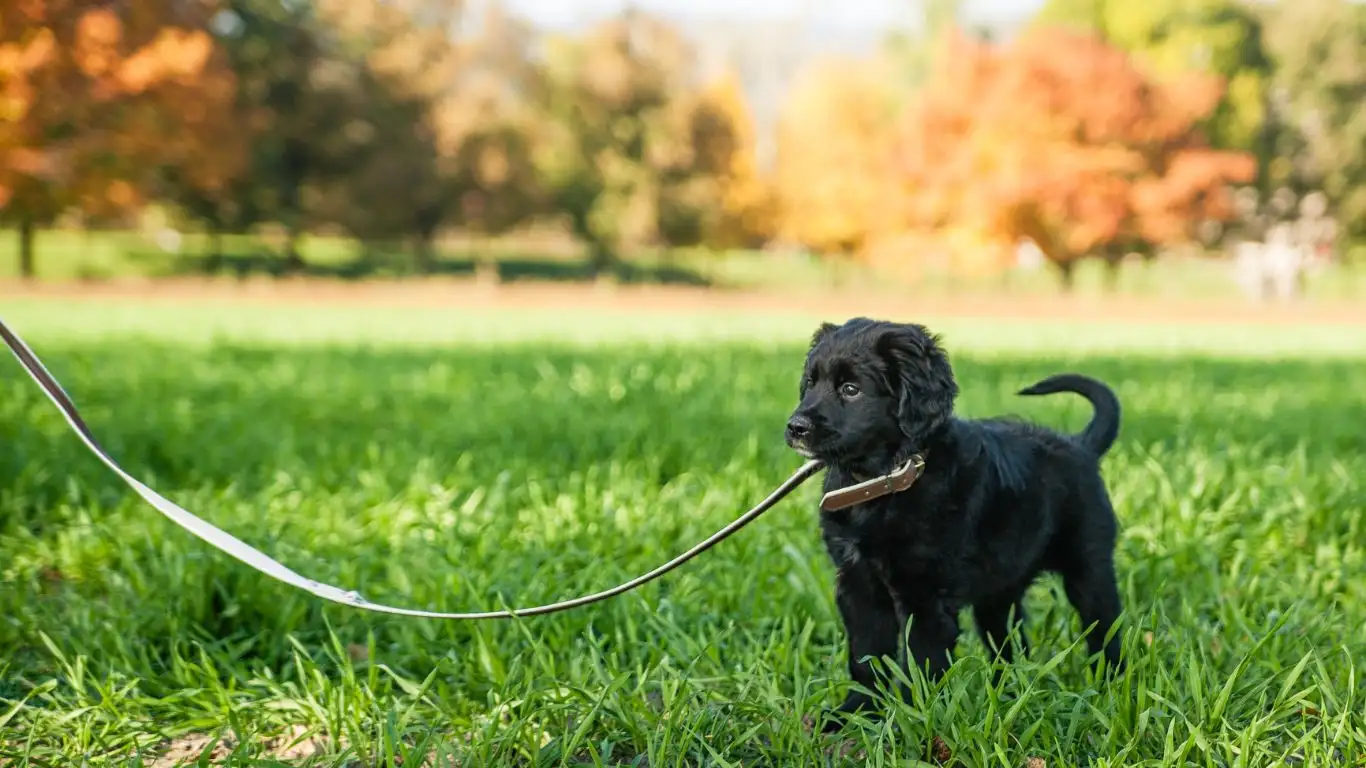
By now, you’ve probably made a lot of progress with reducing or eliminating the lunging behavior during walks. But there’s more to good leash walking than just stopping lunging. As a trainer, I’ve noticed that once we start addressing one behavioral issue, others often pop up, too—like pulling, barking, or reacting to other distractions. Let’s talk about these additional challenges and how you can keep working on making walks a better experience for both you and your dog!
Preventing Pulling: The Key to a Relaxed Walk
If your dog tends to pull on the leash, it’s going to be harder to manage lunging behavior, too. A dog that pulls is in a constant state of excitement or anticipation, which makes them more likely to lunge at people or other dogs. To prevent pulling, I’ve always advocated for teaching your dog to “heel” or walk beside you on a loose leash. This technique works wonders in ensuring your dog stays focused and relaxed during the walk.
To get started with teaching your dog to walk nicely on the leash, try these steps:
- Start indoors or in a low-distraction area—Begin practicing in a space where your dog can focus on you without too many distractions. Reward them for walking with a loose leash and staying close to you.
- Use treats and praise—Just like with lunging, positive reinforcement is key! Whenever your dog walks by your side without pulling, reward them with treats and verbal praise.
- Stop when they pull—If your dog pulls, stop walking immediately. Wait for them to return to you or loosen the tension on the leash, then continue walking. This teaches your dog that pulling won’t get them anywhere.
With consistent practice, your dog will learn that pulling only slows down the walk, and walking calmly beside you gets them where they want to go.
Socialization: Helping Your Dog Stay Calm Around Others
Socialization is a huge part of training, especially when it comes to leash walking. When I work with dogs who lunge or react to strangers, one of the first things I do is look at their level of socialization. Dogs who haven’t been exposed to a wide variety of people, environments, and other dogs are often more reactive, because they’re unsure of how to behave when faced with new situations.
To help your dog become more confident and less likely to lunge at people, make socialization a priority. Here are some tips:
- Expose them to new environments—Take your dog to different places (like parks, pet-friendly stores, or busy streets) so they can experience new sights, sounds, and smells. Keep the encounters positive by rewarding calm behavior and allowing your dog to observe without getting overwhelmed.
- Introduce new people gradually—If your dog is reactive to people, start by introducing them to calm individuals at a distance. Over time, decrease the distance as your dog becomes more comfortable.
- Positive reinforcement for calm behavior—When your dog remains calm around new people or distractions, reward them immediately. This helps them learn that calm behavior results in positive experiences.
Socializing your dog doesn’t have to be overwhelming. Just take things one step at a time, and always keep your dog’s comfort level in mind. If you’re consistent with socialization, your dog will gradually learn that new people and situations aren’t something to fear or react to.
What to Do When You’re Out of Your Depth
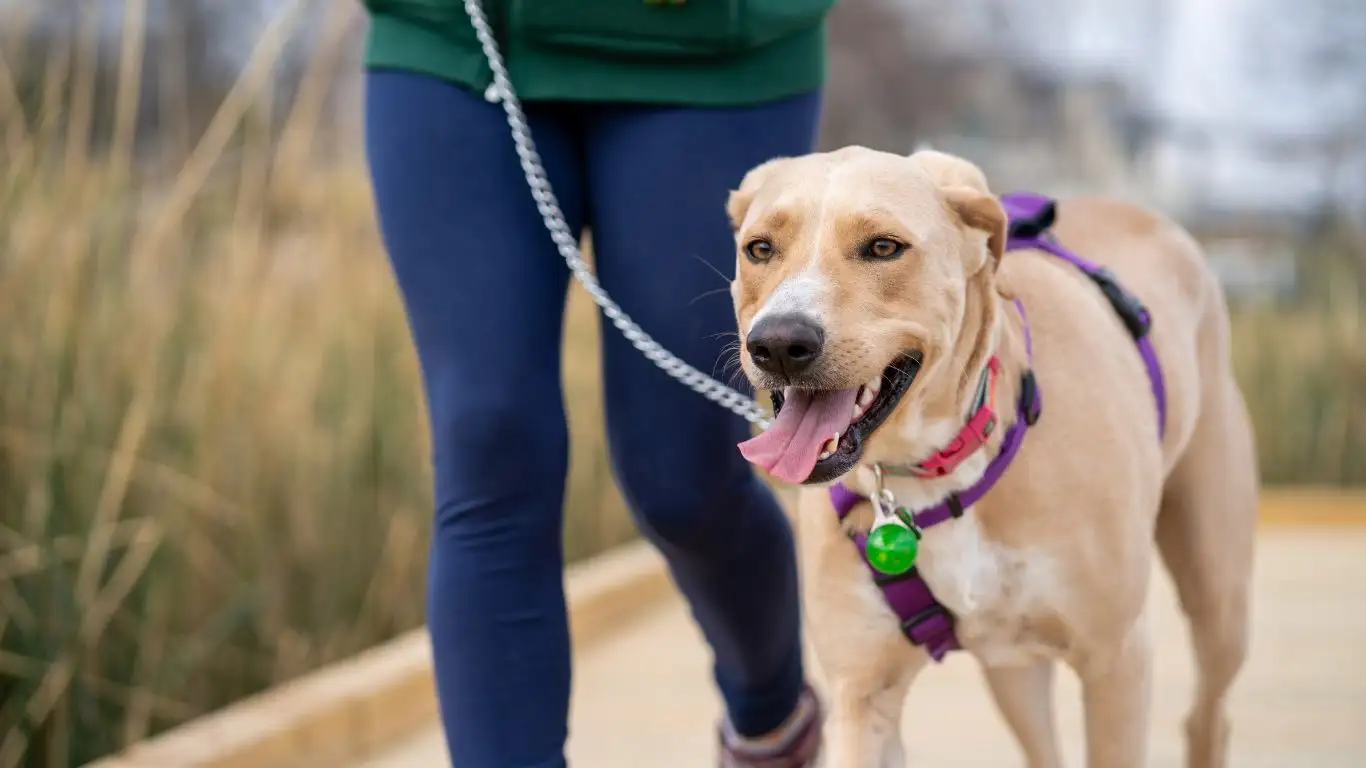
While training a dog to stop lunging at people can be extremely rewarding, it’s important to recognize when you need additional help. Every dog is different, and some may have deeper behavioral issues that require professional assistance. If you find yourself getting frustrated or your dog’s behavior isn’t improving, it might be time to seek out a professional dog trainer.
When to Seek Help from a Professional
As a trainer, I’ve seen firsthand how beneficial professional guidance can be. If you’re struggling with persistent lunging, aggressive behavior, or general reactivity, a Certified Professional Dog Trainer (CPDT-KA) can provide you with tailored strategies and in-person guidance. Professional trainers can:
- Assess your dog’s behavior—They’ll help pinpoint the exact cause of the lunging and other behavioral problems, allowing for a more customized training plan.
- Provide hands-on support—Having a trainer work with you and your dog in real-time can help you navigate tricky situations and build confidence in handling your dog’s reactions.
- Offer ongoing support—Training isn’t a one-and-done deal. A professional trainer will give you tools and strategies to continue progressing even after your sessions are over.
Don’t hesitate to seek professional help if you feel like you’re not making the progress you’d like. It’s not a sign of failure—it’s a step toward ensuring that both you and your dog are set up for long-term success.
References and Resources
For more information on training techniques and behavior modification, I recommend the following resources:
- Paw Patron – A trusted resource for dog training and behavioral advice.
- Certification Council for Professional Dog Trainers (CCPDT) – Learn more about CPDT-KA certification and how it can benefit your training efforts.
- American Kennel Club (AKC) – Explore tips and guidelines for training, behavior, and more.
Disclaimer
Training dogs takes time, patience, and dedication. The techniques shared in this article are meant to be general guidelines and may not work for every dog. If you have concerns about your dog’s behavior, I recommend consulting with a professional trainer who can offer personalized assistance. Always prioritize the safety and well-being of your dog, and adjust training methods as needed based on your dog’s individual temperament and needs.
